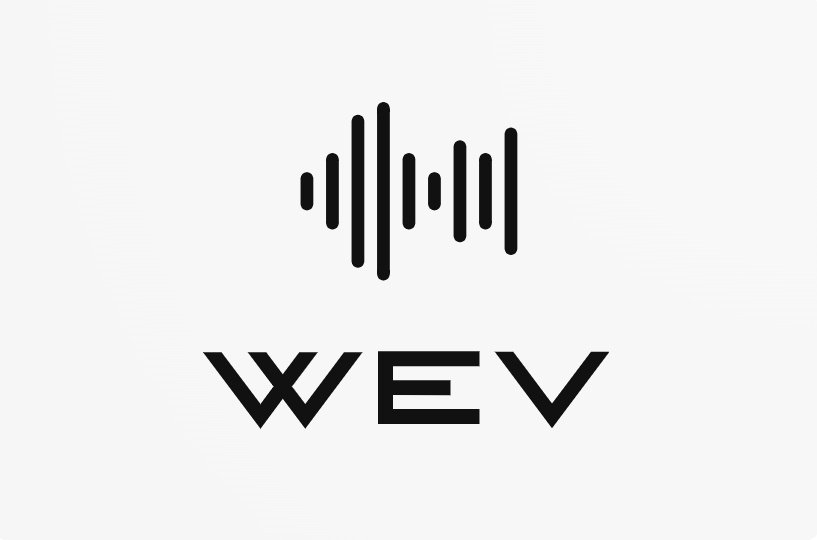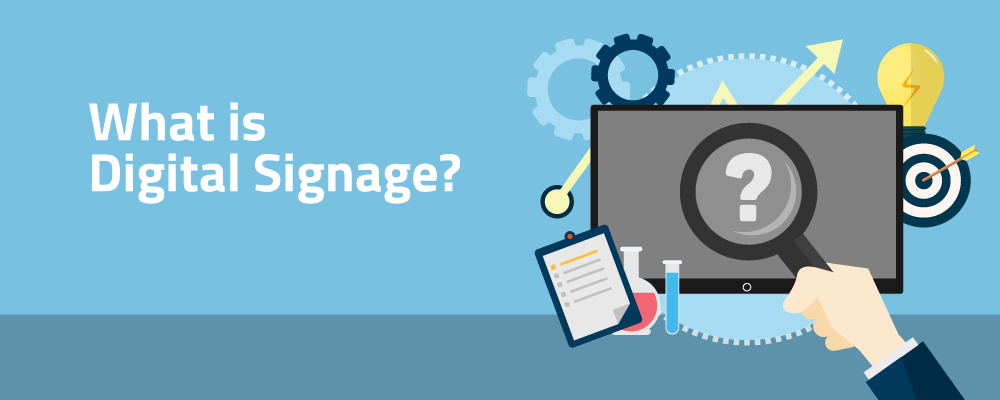Digital signage is a segment of electronic signage. Digital displays use technologies such as LCD, LED, OLED, projection and e-paper to display digital images, video, web pages, weather data, restaurant menus, or text. They can be found in public spaces, transportation systems, museums, stadiums, retail stores, hotels, restaurants and corporate buildings etc., to provide wayfinding, exhibitions, marketing and outdoor advertising. They are used as a network of electronic displays that are centrally managed and individually addressable for the display of text, animated or video messages for advertising, information, entertainment and merchandising to targeted audiences.
Roles and Function
The many different uses of digital signage allow a business to accomplish a variety of goals. Some of the most common applications include:
- Public information – news, weather, traffic and local (location specific) information, such as building directory with a map, fire exits and traveler information.
- Internal information – corporate messages, such as health & safety items, news and so forth.
- Product information – pricing, photos, raw materials or ingredients, suggested applications and other product information – especially useful in food marketing where signage may include nutritional facts or suggested uses or recipes.
- Information to enhance the customer service experience – interpretive signage in museums, galleries, zoos, parks and gardens, exhibitions, tourist and cultural attractions.
- Advertising and Promotion – promoting products or services, may be related to the location of the sign or using the screen’s audience reach for general advertising.
- Brand building – in-store digital sign to promote the brand and build a brand identity.
- Influencing customer behavior – navigation, directing customers to different areas, increasing the “dwell time” on the store premises and a wide range of other uses in service of such influence.
- Influencing product or brand decision-making – Signage at the point of sale designed to influence choice e.g. Signage to help shoppers to choose dresses inside a fashion store or devices that on a computerized shopping trolley helping the customer locate products, check prices, access product information and manage shopping lists.
- Enhancing customer experience – applications include the reduction of perceived wait time in the waiting areas of restaurants and other retail operations, bank queues, and similar circumstances, as well as demonstrations, such as those of recipes in food stores, among other examples.
- Navigation – with interactive screens (in the floor, for example, as with “informational footsteps” found in some tourist attractions, museums and the like) or with other means of “dynamic wayfinding”.
- Reservations – small, interactive screens on walls or desks that allow employees to reserve the space for a limited time and integrate with a room and resource scheduling platform.
Industry Overview
Over 200 different companies worldwide market digital signage solutions and the number is still consistently growing. With the influx of digital signage providers, the digital signage market will increase at a compounded annual growth rate of 7.5% between 2021 and 2028. The reason for the rise is due to the growing demand by companies for the development of digital signage solutions, advertisement displays and paper wastage reduction, along with the growing awareness of the benefits of digital signage. As of 2021, North America dominates the digital signage market with a revenue share of 34.5%. The U.S., U.K., and Germany are projected to have considerable digital signage growth. The predominant market users of digital signage are restaurants, retailers, office buildings, regional state and local planning authorities, public transport services, and various different industries.
The size of the world market for digital signage was projected to be USD 26.76 billion in 2023, and it is projected to increase at a compound annual growth rate (CAGR) of 8.1% between 2024 and 2030.
Restaurants
Digital signage is used in restaurants through an interactive menu screen that rotates promotional offers. Restaurants use digital signage both indoors and outdoors, with the latter needing a form of weather protection depending on the components of the hardware. Outdoor usage of digital signage is most prevalent in drive-through that allows the customer to browse through the entire menu at a glance while also placing their order with an interactive touchscreen. Indoor digital signage is used for the display of menus. Prior to the integration of digital signage, restaurants manually updated the cafeteria menu, which is in itself a full-time job, especially if the menu is updated daily. With digital signage, restaurants do not have to manually update the menu feed, with live menu feed from digital signage solutions. According to a survey conducted by quick-service restaurants and casual restaurant operators, over 20% of restaurant operators experience a 5% sales lift after incorporating digital signage in their service sectors.
Shopping Malls
Digital signage is widely used in shopping malls as a form of directory or map display. Uses of digital signage include a wayfinding kiosk, enabling the customer to find their path through an interactive touchscreen. Recent digital signage have begun combining interactive advertisement with wayfinding application. This will offer shoppers who interact with the advertisement of the tenant in the shopping mall to the store. Another usage is disseminating relevant information such as the schedule of an event or campaign.
Hospitality
The hospitality industry uses digital signage to display crucial information at a convenient and visible location for all its patron. A digital signage is capable of functioning as a virtual concierge in hotels and as entertainment for conferences during waiting room. Digital signage is also used in hotels as a form of wayfinding, to guide a large group of people for a conference to the correct room. Digital signage is used to provide a simple method to update information that is continuously changing such as expo information.
Cinema
Digital signage is placed in the lobby, concession stands and displays advertisement before the movie begins. This informs customers about other theater offerings and scheduling, increasing concession sales and gaining other sources of revenue.
Transport
Transport is a growing sector for digital signage with practical solutions, such as wayfinding, as well as out-of-home advertising.
Personalized Digital Content
One specific use of digital signage is for out-of-home advertising in which video content, advertisements, and/or messages are displayed on digital signs with the goal of delivering targeted messages, to specific locations and/or consumers, at specific times. This is often called “digital out of home” (DOOH).
Education
Digital signage can be used for school cafeteria menu boards, digitized noticeboards, and as an element of smart campuses. The University of Minnesota has installed 300 digital signage boards, updated with real-time data.
How do I know which type of digital display is best for my use case?
From LCD to dvLED, we know the technology can be confusing. Here’s a detailed breakdown of the five major types of digital displays.
LCD (Liquid Crystal Display)
With LCD screens, Liquid crystals are sandwiched between two glass sheets. Backlights behind the screen emit white light, and the light can’t pass through the liquid crystals while they’re in a liquid arrangement.
LCD Pros
- A lower price point due to being on the market for a longer period of time.
- Extremely high-resolution technology.
- Can display text, images and video in sharp detail.
- Bright, affordable and reliable.
LCD Cons
- Limited size options.
- Bezels create visible seams when screens are tiled together.
- Serviceability.
LED (Light-Emitting Diode)
Light-Emitting Diodes produce red, green and blue light. By combining and balancing these three primary colors, the user can produce virtually any color on the spectrum.
LED Pros
- Long life span compared to other displays, they are highly reliable and low maintenance.
- Consume less energy and therefore save a lot of power.
- Guarantees optimal viewing conditions at any time of day.
- Better contrast and color quality for sharper image.
LED Cons
- Contrast ratio is not as consistent.
- More expensive than its counterparts.
- Higher risk for image retention/screen burn.
OLED (Organic LED)
OLED is a flat light-emitting technology. “Emissive,” meaning the pixels emit their own light and do not require a backlight.
OLED Pros
- Improved image quality – better contrast, higher brightness, fuller viewing angle, a wider color range and much faster refresh rates.
- Simpler design that enables ultra-thin, flexible, foldable, and transparent displays.
- Better durability – OLEDs are very durable and can operate in a broader temperature range.
- Lower power consumption.
OLED Cons
- Higher cost to produce than LCD & LED.
- Poor sunlight readability. Not recommended for outdoor use.
- Shorter lifetime compared to other displays.
QLED (Quantum Dot LED)
A variation of LED, adding a quantum dot film to the LCD “sandwich,” which enhances the colors and brightness of images. Screens rely on LED backlight.
QLED Pros
- The application of quantum dot technology can result in the production of large, thin, and flexible LCDs, which allows for thinner and lighter displays without sacrificing screen size.
- Wider contrast ratio due to their ability to display deep natural black tones.
- The production of more vibrant and accurate colors offers better color accuracy than conventional LCDs.
- Energy efficient (uses 3-50% less power than LCDs).
QLED Cons
- Slower response time makes QLED unsuitable for applications that require high frame rates.
- “Light bleed” effect, which is visible in certain scenes. There can be a slight haze around bright objects which blurs lines that should be sharp.
- Poor viewing angle. The color and contrast diminishes when a viewer moves away from the center of the screen.
dvLED (Direct View LED)
Hundreds of tiny LEDs mounted directly to a panel and no liquid crystal or polarized glass is used. “Pixel Pitch” is the distance between LEDs; the lower the pixel pitch, the closer the comfortable viewing distance.
dvLED Pros
- No bezels creates a seamless video wall, including curved applications.
- Extremely bright, reliable, energyefficient, and has the best color accuracy and refresh rates.
- Best choice for large-scale and high-impact visual applications.
- Serviceability.
dvLED Cons
High power consumption.
2-3 times higher cost than LCD.
Not the best option for ultra-high resolution application, however, advacements in the technology are quickly closing the gap.
What’s the advantage of working with WEV for digital signage?
WEV is a professional manufacturer of Digital Signage with more than 11 years’ experience. Various screen sizes (8”/10.1”/13.3”/14”/15.6”/17.3”/18.5”/21.5”/24”/27”/32”/43”/55”) are optional. Our company is with the capability to provide one-stop service from hardware development to Android customized software development and to manufacturing.






